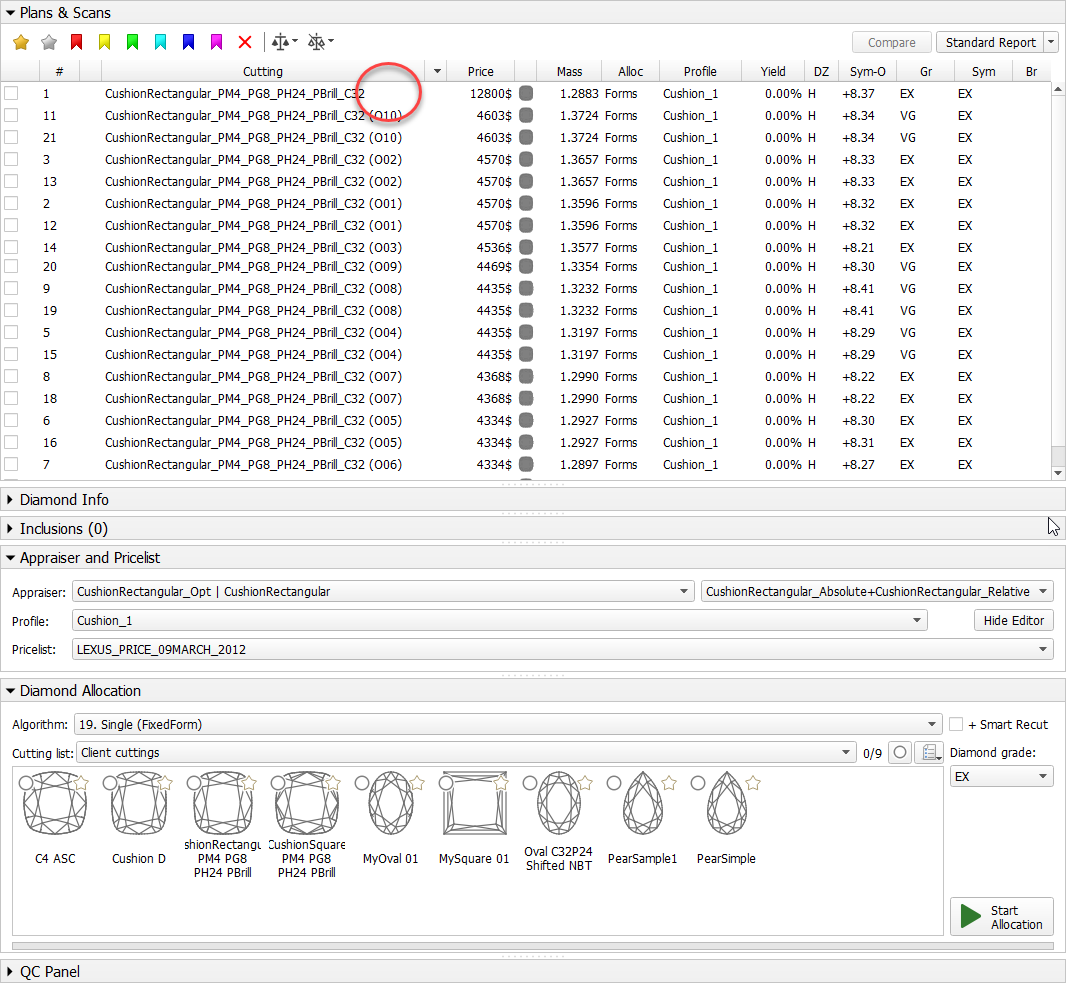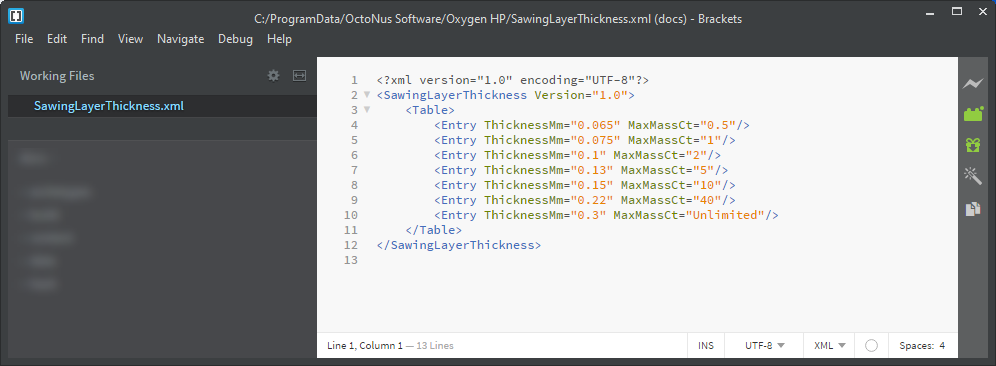...
| Tip | ||
|---|---|---|
| ||
|
Appraisers for Cushion
For AnyCut WorkflowIn-house cut workflow, two new appraisers are added - both for working with the Cushion cutting:
...
Now for each of the Client Cuttings, you can specify a unique SweetLine axis slope using its allocation forms (for information about user cuttings and allocation forms, see User Cutting RegistrationIn-house cut registration ). There are three ways of how SweetLine axis slope is specified for the cutting:
The user did not specify any specific forms: the SweetLine axis is built using the base allocation form of the cutting - the system uses this form and draws a line through it in accordance with the built-in system logic for finding optimal optical performance.
Expand title About base allocation form Panel bgColor #F8F9F9 borderStyle solid What is a base allocation form? It is the form automatically registered when performing User Cutting Registration In-house cut registration (equal to the model being registered as cutting).
How to distinguish the base allocation form? In the list of forms, it does not have "(...)" after its name:
- The user specified only one form: the SweetLine axis is built using this form - the system uses this form and draws a line through it in accordance with the built-in system logic for finding optimal optical performance.
- The user specified two forms: the SweetLine axis is built using these forms - the system draws a line through them.
...
The set of parameters for AnyCut has been extended. This affected the Standard reportReport for AnyCut and HTML illustrated Polish Report for AnyCut.
...
- The set of displayed parameters depends on the current model Facet Marking - "empty parameters" (making no sense for the current model) will not be displayed.
- For the Cushion - the set of displayed parameters is different for Square and Rectangular cushions
...
For demonstration purposes, the "Oval_C32P24_Shifted_NBT" cutting is added to Client cuttings, along with the corresponding profile under the AnyCut composite appraiser ("MyAnyCutOpt | MyAnyCut"). The cutting contains a number of allocation forms. The cutting and the appraiser may be used within AnyCut WorkflowIn-house cut workflow for testing purposes. Using the "Oval_C32P24_Shifted_NBT" is optional.
...
The new "20. Single (Recut)" algorithm is added to the system. The new algorithm is the improvement of the "19. Single (Recut)". The "20. Single (Recut)" is intended, like its predecessor, to be used for the solution allocation within AnyCut WorkflowIn-house cut workflow (see "Allocation" section for details). The algorithm is expected to produce better solutions than the "19. Single (Recut)" - during the testing period both algorithms will be presented in the system. On success testing, the "20. Single (Recut)" will replace the "19. Single (Recut)" and in prospect also the "13. Single (Rough)" algorithm.
...
It is now possible to configure the thickness of this layer depending on the initial model mass. This can be done via the "SawingLayerThickness.xml" file, stored in the "..\ProgramData\OctoNus Software\Oxygen HP\" folder.
In HP OxygenCarbon, in the solution list, the Diamonds section for the selected solution (the solution includes 2 diamonds), the sawing layer is listed, its thickness in mm is displayed.
...

